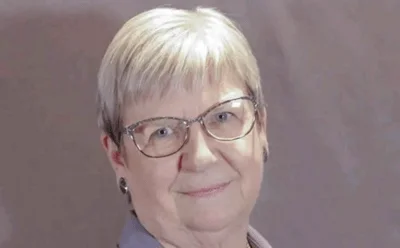Illinois' 6th Congressional District issued the following announcement on April 6.
U.S. Representative Sean Casten (IL-06) wrote Federal Energy Regulatory Commission (FERC) Chair Chatterjee concerning FERC’s proposed rule changes to federal power markets. The changes overstep FERC’s authority, and would make it harder to fund renewable power generation capacity.
Casten wrote, in part, “…FERC does not have the authority to implement the rules contemplated in this NOPR. FERC’s role is not to decide whether a law is still relevant, but to ensure those laws as passed by Congress are implemented in the electric markets” and “Much of the NOPR would have the practical effect of reducing the ability to secure long-term revenue guarantees, which will serve only to raise the risk (and thus the cost of capital) for new power generation investment. The elimination of the contract option will serve only to reduce grid reliability and/or increase the costs of electricity.”
In January, Casten introduced the Energy PRICE Act, which would tackle many of the issues with the proposed FERC rule, and clarify that FERC has the responsibility to ensure that public utilities account for greenhouse gas emissions when setting their utility rates.
You can read the full letter below, or by clicking here:
Dear Chairman Chatterjee,
I write to express my concern regarding the Commission’s action that would effectively overhaul the Public Utilities Regulatory Policies Act (PURPA) contravention of Congressional authority. When Congress passed PURPA in 1978, it was intended to help deploy cleaner, more efficient power generation sources, and to address the structural problems that remain in our power markets, due to the vestiges of the regulated monopolies that built our electric grid. The decisions that shaped PURPA were ones that were made by Congress and were Congress’ authority alone to make.
Since that time, technological advances and evolution of state, federal and regional energy policies have substantially changed our national electric markets. Congress has responded to and acknowledged those changes, and has, in several instances considered legislation to amend PURPA. While Congress has generally concluded that such actions were not warranted, we did elect to amend the statute in 2005 as a part of the 2005 Energy Policy Act (EPAct 2005). While considering the legislation, Congress made changes specifically limited only to certain regions of the United States where wholesale energy markets met certain criteria. It had the opportunity and the authority to make further changes but declined to do so; it is not the Commission’s role to step in where Congress declined to intervene.
The Commission’s actions in this docket flaunt Congressional and statutory intent. As Commissioner Glick said in his dissent, “[Today’s NOPR] removes an important debate from the halls of Congress and isolates it within the Commission.”
If and when Congress decides to revisit PURPA, FERC will have to update their rules, but it is not FERC's place to reform those markets independent of Congressional direction. Making such changes in the absence of Congressional direction oversteps FERC’s statutory authority, and, as Commissioner Glick points out, is “neither a durable nor desirable approach for developing energy policy.” Put simply, FERC does not have the authority to implement the rules contemplated in this NOPR.
FERC’s role is not to decide whether a law is still relevant, but to ensure those laws as passed by Congress are implemented in the electric markets.
In addition to the jurisdictional issues with FERC’s actions, the logic for your decision is based on assertions that are at odds with my professional experience in the electric industry.
I have spent my entire adult life (and much of my childhood) dealing with PURPA and associated FERC rules. When I was in elementary school, my father testified before the Senate Energy Committee on the proposed bill that later became PURPA. Subsequent to the passage of PURPA, he built one of the first Qualifying Facilities in the country - a 13 MW engine-based cogeneration plant in Trenton, NJ that is still operating today. That company became Trigen Energy - at one point, the largest district energy company in the United States.
Nearly a quarter century later, I took over a small manufacturing company in Western Massachusetts that built packaged cogeneration plants, and would later co-found Recycled Energy Development, a company that took over industrial utility assets and made efficiency investments therein. I have personally been responsible for the construction, ownership and/or operation of over 80 cogeneration projects in 30 states and multiple foreign countries.
However, while my father's career was built around PURPA (and specifically, the power purchase agreements enabled by Sections 201 and 210), my own career was built around retail rate displacement. This was not because PURPA was no longer necessary, but rather because during that 25 year period, the definition of "avoided cost" was redefined by multiple state utility commissions to gradually move away from a rate that included T&D costs, line losses and other services necessary to meet local loads and towards a marginal wholesale rate that failed to take into account distribution costs or generator capital charges. This meant that to survive as a QF developer in the 2000s, I had to optimize to the nuances of local retail rate displacement rather than to grid optimization. In many cases, this caused developers like me to sub-optimize generator design and dispatch, contravening the original intent of PURPA.
I have no continuing economic interest in those businesses, but given that experience, offer several specific responses to the NOPR.
- The Elimination of the Contract Option: Currently, PURPA provides qualified facilities (QFs) two options for selling their power to utilities. The QF can either 1) sell its energy on an as-available basis and receive a rate calculated as the cost avoided by the utility at the time of delivery or 2) a QF can enter into a long-duration contract with a fixed cost at either the time of the contracting or at the time of delivery. As Commissioner Glick points out in his dissent this flexibility has historically “played an important role in fostering the development of a variety of QFs.” However, this NOPR would eliminate the option to utilize long-dated contracts for QFs.
- FERC must play a role in Ensuring Equal Access for All Qualified Facilities: Given the decline in rates offered under avoided-cost formulations subject to PURPA and the rise of RPS markets (for certain technologies) and tax credits, it is not surprising that "the majority of renewable resources in operation today do not rely on PURPA". However, this reality is the result of a steady weakening of PURPA, not of markets maturing to no longer rely on PURPA. Moreover, we cannot afford to ignore the fact that the types of technologies rewarded under a QF formulation included a much broader and more dispatchable set of technologies than those (primarily wind and solar) that are eligible for RPS credits. FERC must continue to play an active role to ensure that markets can attract capital for all clean technologies, not just those favored by certain state renewable programs. By abdicating that role, FERC cedes leadership to state officials and diminishes the federal role established by Congress for FERC to play in ensuring competition and equal access to the grid. Congress granted FERC significant responsibility and oversight of our grid and the Commission must not reduce their role without Congressional direction.
- Levelized Cost of Energy (LCOE) is an imprecise metric that should not be used as the primary support for a sweeping NOPR: Levelized cost of energy (LCOE) is a flawed metric to compare the competitiveness of different power technologies. While consultants and investment banks use LCOE as a simple way to compare energy resources, the measure is at best an estimate and does not often factor into the decision-making of important actors in the power sector, including power plant operators and developers. Power plant investors consider the total capital cost, their cost of capital, and the anticipated spread between marginal operating expense and marginal revenue. Power plant operators on the other hand make real-time decisions about how often to run the plant based solely on marginal cost / marginal revenue calculations. LCOE is perhaps a useful shorthand, but does not describe a metric used by anyone in the space to invest or dispatch power assets. Moreover, given differential tax treatment between technology and ownership structures a metric like LCOE that implicitly assumes a consistent cost-of-capital is grossly misleading. As such, FERC should focus on those regulatory changes that lower the cost of capital to all market participants on a consistent risk-adjusted level and in no cases should draw conclusions about technological competitiveness based on over-simplistic LCOE calculations.
- Market Reforms Are Still Needed: This letter does not suggest that the mix of generators being deployed is not changing. While not all of these changes are problematic, it is becoming clear that Congress should revisit the underlying statutes that influence the design of our electric markets, including aspects of PURPA. For instance, over the past decade, there has been a substantial decline in the deployment in domestic cogeneration. This decline has been driven substantially by two factors: First, the offshoring of energy-intensive manufacturing, which has moved many of the thermal loads overseas. Second, the steady fall in wholesale power prices as markets have deployed so much zero marginal cost generation in the face of markets designed by FERC Order 888 that have caused the overwhelming majority of the economic gain from those power plants to accrue to electricity consumers. As the value of electricity has fallen, the investment case for mature technologies with little room to further lower their capital costs per installed MW has been squeezed. This trend has, to some degree, contributed to the falling emissions on the grid as zero marginal cost resources with falling technology costs, like wind and solar, have been able to continue to compete at lower and lower energy prices. However, as technology costs eventually level off for renewable resources, there is a significant concern that even zero marginal cost resources will be unable to make a clear investment case. Whether new generation can compete in such an environment is a significant public policy question moving forward. As such, the steady trend towards zero-marginal cost power markets is a significant trend that FERC and Congress should consider as we shape future market design. While FERC cannot act unilaterally to change PURPA in response to these changes, efforts to address them through jurisdictionally appropriate means should not be ignored. I introduced an attempt to rectify the law in response to these long term trends via the Energy PRICE Act, which I introduced in January.
Original source can be found here.





 Alerts Sign-up
Alerts Sign-up